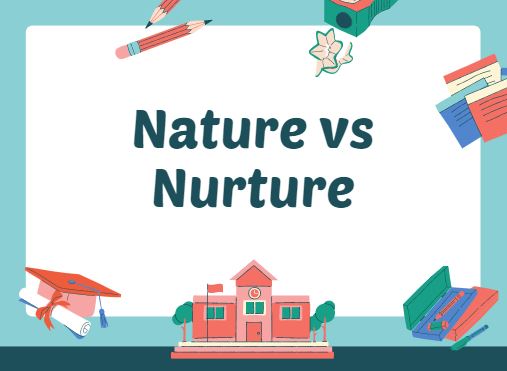The nature and nurture debate concerns itself with the development of a way to look into the acquisition of certain aspects in the human world. There are aspects that are learned from the surrounding (nurture) and those that are genetic within an individual (nature). The aspects of nature and nurture depict the manner, which an individual is influenced to carry out their activities with certain considerations (Santrock, 2017). Notably, the use of the nature and nurture debate focuses on the instilling of better and beneficial ways to deal with the delivery of behavioral analysis. Hence, the nature and nurture debate helps to look into the behavior of one and expounds on why they carry out their activities.
Aggression in most cases is genetic and comes within an individual. Genetic alignments within people establishes their hormonal reaction towards different issues in the community. For instance, children in their pre-school ages have aggressive tendencies when they seek to have control over certain aspects of their lives. Therefore, in this case, aggression counts in as a matter of nature within an individual. When someone who is genetically aggressive is placed in a calm environment, they will still exhibit aggression to the highest levels.
The Bobo doll experiment seeks to look into the influences that imitation has on children. The experiment addresses the instance of observational learning and behavioral techniques, which are relevant in the debate. Notably, the experiment indicates that certain aspects of aggression are indicated in the environment of an individual (Santrock, 2017). Nonetheless, the establishment of a particular way to deal with the experiment places a great consistency on the determination of ways to attain a better angle of dealing with the imitation and observational activities. Therefore, in relation to the experiment, one gest to have a chance to integrate the lessons they learn from watching others into their lives and manage to do them or avoid carrying them as stated in the debate.
One of the main flaws in the experiment that does not apply to the debate is the statement of ways that an individual has to engage in reward or punishment activities after the exercise. In the realistic instances, the children have limitless things that they can learn from and engage with to ensure they see the model of carrying out activities in the society (Santrock, 2017). While working towards ensuring an enhanced system of observation and imitation, some of the children do not see the reward or the punishment side, but get to imitate the activities taking place in the society. Hence, the experiment does not have accurate interpretation of the debate as it happens in a controlled environment.
In conclusion, in case children predominantly learnt through imitation, the society will lack the ability to change certain negative activities. Since children have to engage in diverse activities to learn, they can change the narratives in the society and achieve a level of challenge to the customs and norms in the society. Hence, when children learn through imitation, different ideals cannot be changed. Nonetheless, the aspect of nature and nurture indicates the need to ensure proper mention of activities in the community as they take place. The use of a proper mechanism to deal with the learning of traits helps to distinguish the corrective behavioral management for every negative activity.
We can write you a plagiarism free paper with same topic, from scratch. Visit our cheap essay writing service
References
Santrock, J. W. (2017). Life-span development.
